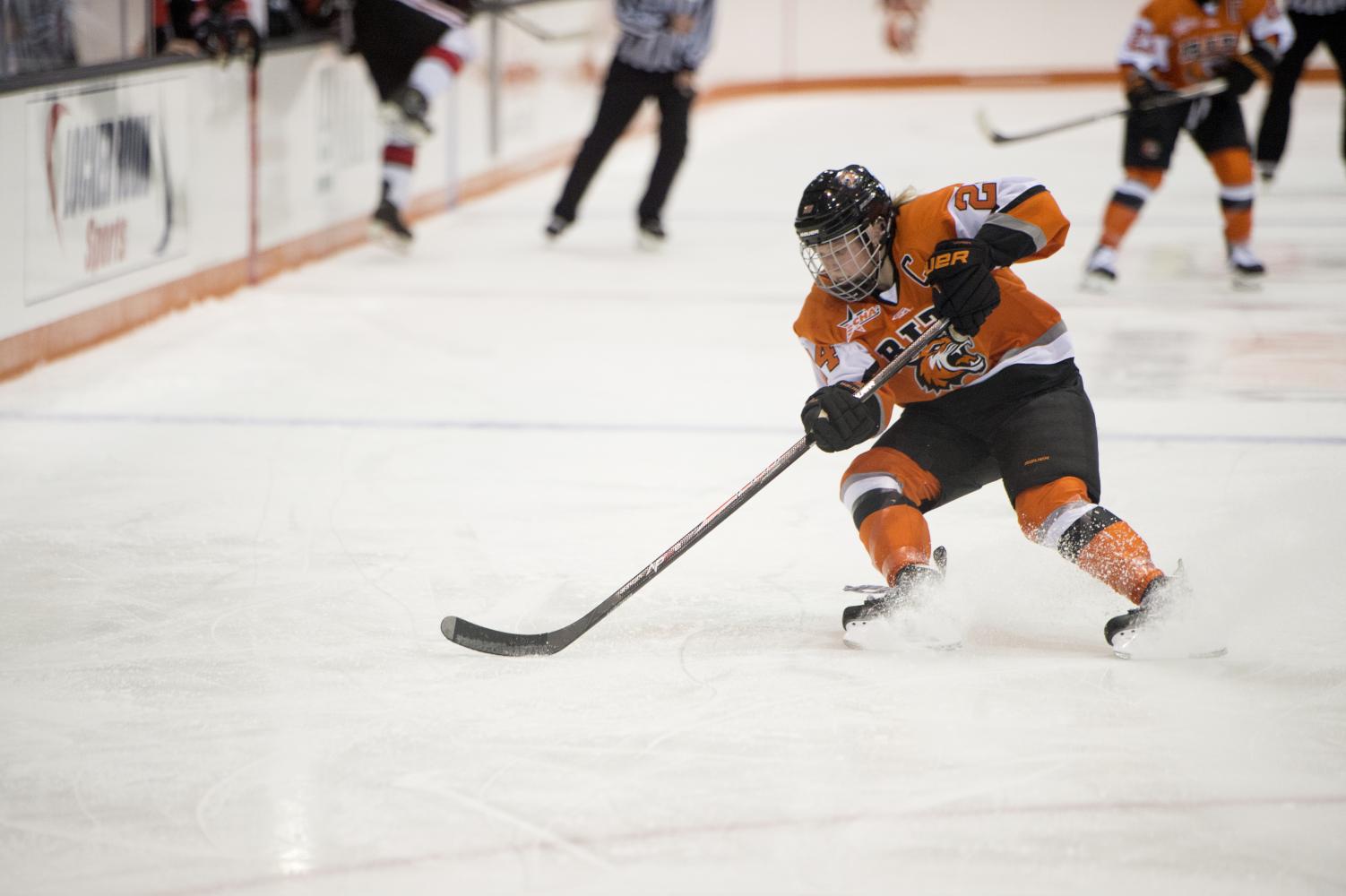This October marks a major change in North American hockey: the puck will drop for the first time in the National Women’s Hockey League (NWHL).
The NWHL is not the first of its kind, but it is the first to pay its athletes. There will be a salary cap of $270,000, and the NWHL, unlike the Canadian Women’s Hockey League, will be providing all of the necessary equipment for playing a sound hockey game. The season will consist of two practices a week and there will be nine home games as well as nine away games; one weekend game per team per week. Each home game is planned to be themed towards a charitable cause such as cancer awareness or military appreciation. The league currently consists of 4 teams: the Buffalo Beauts, the Boston Pride, the New York Riveters and the Connecticut Whales. There are plans to eventually expand the NWHL to more of the northeast, eventually creating teams across the country.
Celeste Brown, RIT Women's Hockey alum and future player for the New York Riveters, believes that the NWHL, while still in its infancy, has the potential to be a huge mark of progress in women's professional sports.
"Whenever female athletes can get paid to play a sport, it starts to level the playing field between men and women's sports," Brown said.
The NWHL is going to bring women into the headlines and will hopefully show what they have to offer in what is currently an all-male field.
Similar to the NHL, players are drafted to the NWHL. The draft is open to college juniors only and they are given a year to finish their NCAA eligibility while the team they signed for retains their rights. Seniors and those players who have graduated are eligible to the NWHL as free agents.
Unlike the NHL, the NWHL season will begin making history in October and end in March, rather than April. Ending the season in March allows the players to have the opportunity to play in the World Championship. The season will end with the awarding of the Isobel Cup, which is named after Isobel Gathorne-Hardy, the daughter of the donator of the Stanley Cup.
Although the closest team to Rochester is in Buffalo, the NWHL has already had an impact on the RIT community. Celeste Brown is one of the four RIT women’s hockey players to be signed as a free agent to the NWHL. Brown was the first free agent from RIT to be recruited, and signed with the New York Riveters. This marks her as the first RIT women’s hockey player to sign a professional contract.
Brown, hailing from Great Falls, MT, was no less than pivotal to the women’s hockey team during her career at RIT. She carried the team, scoring the NCAA championship winning goal in 2012, breaking a 1 – 1 tie, in her first year while the team was still in NCAA Division III. She also had four game winning goals that year.
As the team moved from Division III to Division I, Brown became even stronger. She described her team's success as "the ultimate experience," adding that all of the team's hard work had paid off immensely. Brown became captain and held the role for two seasons, leading her team with 10 goals in her senior (2014 – 15) season. She led the Tigers strongly with 10 goals in 2014 – 15, bringing them to their second straight College Hockey American Championship. Brown also led the team to their first appearance in the NCAA Division I Tournament.
In her entire career at RIT she played 139 games and piled up 70 points on 42 goals and 28 assists. Brown is RIT’s Division I career leader with 30 goals.
"The fact that we have four tigers that signed is even more exciting and impacting," Brown said. "It goes to show that our school can help build top athletes, it's not just the normal hockey schools anymore." Brown also remarked that RIT has pushed her limits to get her and other players ready for large feats like the NWHL.
The NWHL largely affects the goals that many women looking to play college hockey may have. The NWHL now offers a paid position after college without going abroad to play for international leagues. The NWHL even creates new goals for incoming RIT Tigers, and these new opportunities allow women to look past college in their hockey career. The NWHL also shuts down stigma against women playing hockey.
"Now young girls can aspire to something," Brown said. "They can say, 'I want to be an NWHL player!'"
The NWHL will challenge female hockey players in a way that the NHL does male players. Female hockey players now have the chance to continue their career further than they ever could have dreamed. Celeste Brown shows that RIT has the opportunity to take these amazing hockey players anywhere. RIT pushed her to her goals of making history with the NWHL with flying colors, and gave her great experiences along with it.








